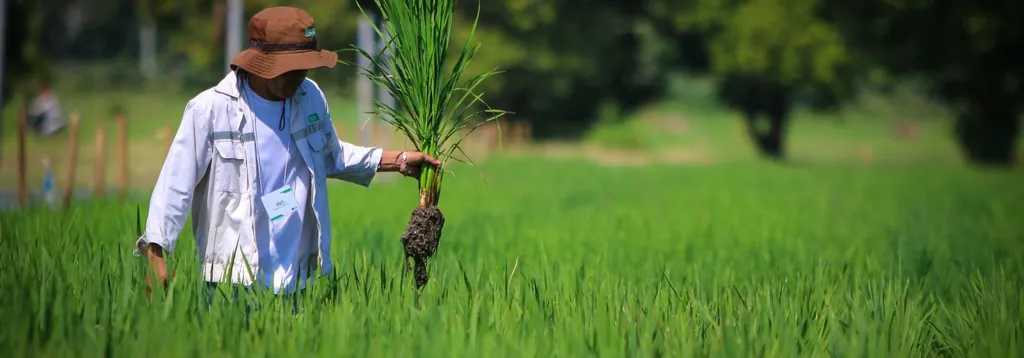In the heart of Iran’s technological landscape, a groundbreaking study led by Dr. Hassan Rezvan from the Department of Photogrammetry and Remote Sensing at K. N. Toosi University of Technology is revolutionizing smart agriculture. The research, published in the esteemed journal ‘Sensors’ (translated as ‘Detectors’), introduces a fully automated two-step method for segmenting rice seedlings and assessing their health, a development that could significantly impact global food security and agricultural efficiency.
Dr. Rezvan’s innovative approach integrates spectral, morphological, and textural features to enhance monitoring and control in agricultural processes. The method begins by identifying seedling locations using the excess green minus excess red index, which enables automated point-prompt inputs for the Segment Anything Model. This model achieves precise segmentation and masking, allowing for the extraction of morphological features from the generated masks. Spectral and textural features are derived from corresponding red–green–blue imagery, providing a comprehensive analysis of seedling health.
The health assessment is conducted through anomaly detection using a one-class support vector machine, which identifies seedlings exhibiting abnormal morphology or spectral signatures suggesting stress. “This method allows for timely interventions, such as pruning or replacing unhealthy seedlings, to optimize crop yield,” explains Dr. Rezvan. The proposed method is validated by visual inspection and Silhouette score, confirming effective separation of anomalies. For segmentation, the proposed method achieved mean dice scores ranging from 72.6 to 94.7. For plant health assessment, silhouette scores ranged from 0.31 to 0.44 across both datasets and various growth stages.
The implications of this research are vast, particularly in the context of global food security. As the world’s population continues to grow, the demand for increased food production becomes ever more critical. Dr. Rezvan’s method facilitates temporal monitoring of seedling health across three consecutive rice growth stages, providing farmers with the tools they need to make informed decisions and optimize crop yield.
The commercial impacts of this research are equally significant. By enhancing the efficiency and accuracy of crop growth monitoring, this method can reduce labor costs and improve overall agricultural productivity. The integration of advanced segmentation and anomaly detection techniques into agricultural practices represents a significant step forward in the field of smart agriculture.
Dr. Rezvan’s research not only highlights the potential of these advanced techniques but also paves the way for future developments in the field. As the agricultural industry continues to evolve, the integration of deep learning and remote sensing technologies will play a crucial role in shaping the future of food production. This research serves as a testament to the power of innovation and the potential of technology to transform traditional industries.
In the words of Dr. Rezvan, “This method is a game-changer for the agricultural industry. It provides farmers with the tools they need to monitor crop health more effectively and make data-driven decisions that can significantly improve yield and reduce waste.” As the world grapples with the challenges of climate change and food security, Dr. Rezvan’s research offers a beacon of hope and a path forward for the future of smart agriculture.

